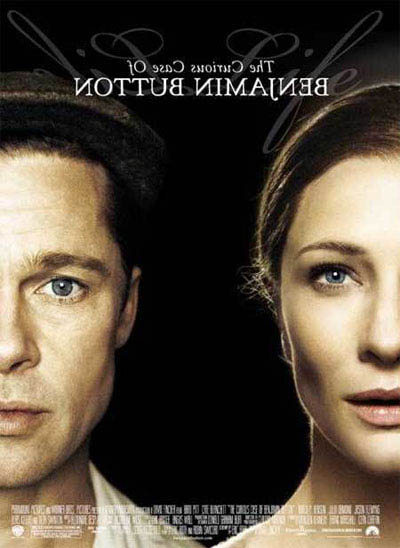
To say "The Curious Case of Benjamin Button" is the year's best film is too high of a compliment (it is getting a few of those), but the film is surely one of the best of the year. With David Fincher's direction the film moves through one man's story with ease, grace and a much needed omnipresent feel.
The audience is allowed a once in a lifetime opportunity to read from Mr. Button's very own journal and life-story through the voice of a dying woman's daughter's voice. Katrina thumps outside the window, always on the edge of land and the destruction that the audience knows will follow.
It is Eric Roth's best idea in the script, outside of moving the short story by F. Scott Fitzgerald from Baltimore to New Orleans. The introduction to the characters through a journal, and to see the dying lover of Benjamin at a ripe old age gives the audience a mistaken hope that youth will rule the film as it is a flashback. But the audience is left to see for themselves how this unbelievable story of a man who ages in reverse for their own eyes, having to wait for the youthful eyes of Brad Pitt, and the energetic movements of a younger man.
What Mr. Pitt brings to the role is a great smile, look, energy and emotional eyes (his eyes are placed on each body that Benjamin must suffer through). The problem with t he film is that Mr. Pitt is so well-known that waiting for the years to pass, Benjamin to age into a more youthful self, and to get to Mr. Pitt's own sculpture to grace the curious man feels like ages. It is hard for an audience to anticipate his arrival, and to understand the way the human mind progresses because the body is moving in a reverse direction, wouldn't the mind move this way as well? Not if is it a blank slate, so to see the mind evolve is very unique here. It is in fact the whole story.
The story of how we love, why we love, and how we all meet our death is the central message here, no matter how we get there.
I'll leave it to you, the audience to discover how Cate Blanchett and Mr. Pitt work on-screen, and how their love is established. But I will say this: it works, no matter how odd it really is.
The reason it all works is because of David Fincher's direction. His fly on the wall approach works here. Keeping the camera from showing the emotions of the actors Fincher allows the actors to create the mood. His CGI proles is something to marvel at as well (he was an effects man back in the past before getting his shot to direct). The movie is dark, it seems to take place at night more often than not (night-life is more interesting isn't it?) but this movie is one of Mr. Fincher's easier movies on the eyes. He stays in the shadows but lights them, and avoids frenetic cuts, or too gruesome of images.
One grievance against Mr. Roth and Mr. Fincher I do have is the Hummingbird. Forced symbolism is one of the things that movies should avoid. Let the audience discover things for themselves, don't feed it to them. The American public and moviegoers of the world should be treated as intellects, otherwise they get lazy.
So get out there this Holiday season and see "The Curious Case of Benjamin Button" and "Slumdog Millionaire."
I am on my way to see "Slumdog" again and I hope my impressions can only be strengthened.
But for now I hope to still see "Doubt," "The Wrestler," and a few others that are opening.
Here is a trailer for "Ben Button"







